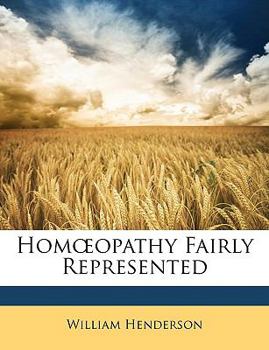Homopathy Fairly Represented
"Homoeopathy Fairly Represented" by William Henderson offers a detailed exposition of the principles and practices of homeopathy in the mid-19th century. Henderson, a prominent advocate of this alternative medical system, presents a reasoned defense against common criticisms and misconceptions prevalent at the time. The book meticulously outlines the core tenets of homeopathy, including the law of similars ('like cures like') and the use of highly diluted substances.
Henderson's work provides valuable insights into the historical context of homeopathic medicine and its evolving role within the broader landscape of 19th-century medical thought. It serves as a primary source for understanding the challenges and controversies surrounding alternative medical practices during this period and illuminates the perspectives of those who championed its cause.
This work has been selected by scholars as being culturally important, and is part of the knowledge base of civilization as we know it. This work was reproduced from the original artifact, and remains as true to the original work as possible. Therefore, you will see the original copyright references, library stamps (as most of these works have been housed in our most important libraries around the world), and other notations in the work.
This work is in the public domain in the United States of America, and possibly other nations. Within the United States, you may freely copy and distribute this work, as no entity (individual or corporate) has a copyright on the body of the work.
As a reproduction of a historical artifact, this work may contain missing or blurred pages, poor pictures, errant marks, etc. Scholars believe, and we concur, that this work is important enough to be preserved, reproduced, and made generally available to the public. We appreciate your support of the preservation process, and thank you for being an important part of keeping this knowledge alive and relevant.





